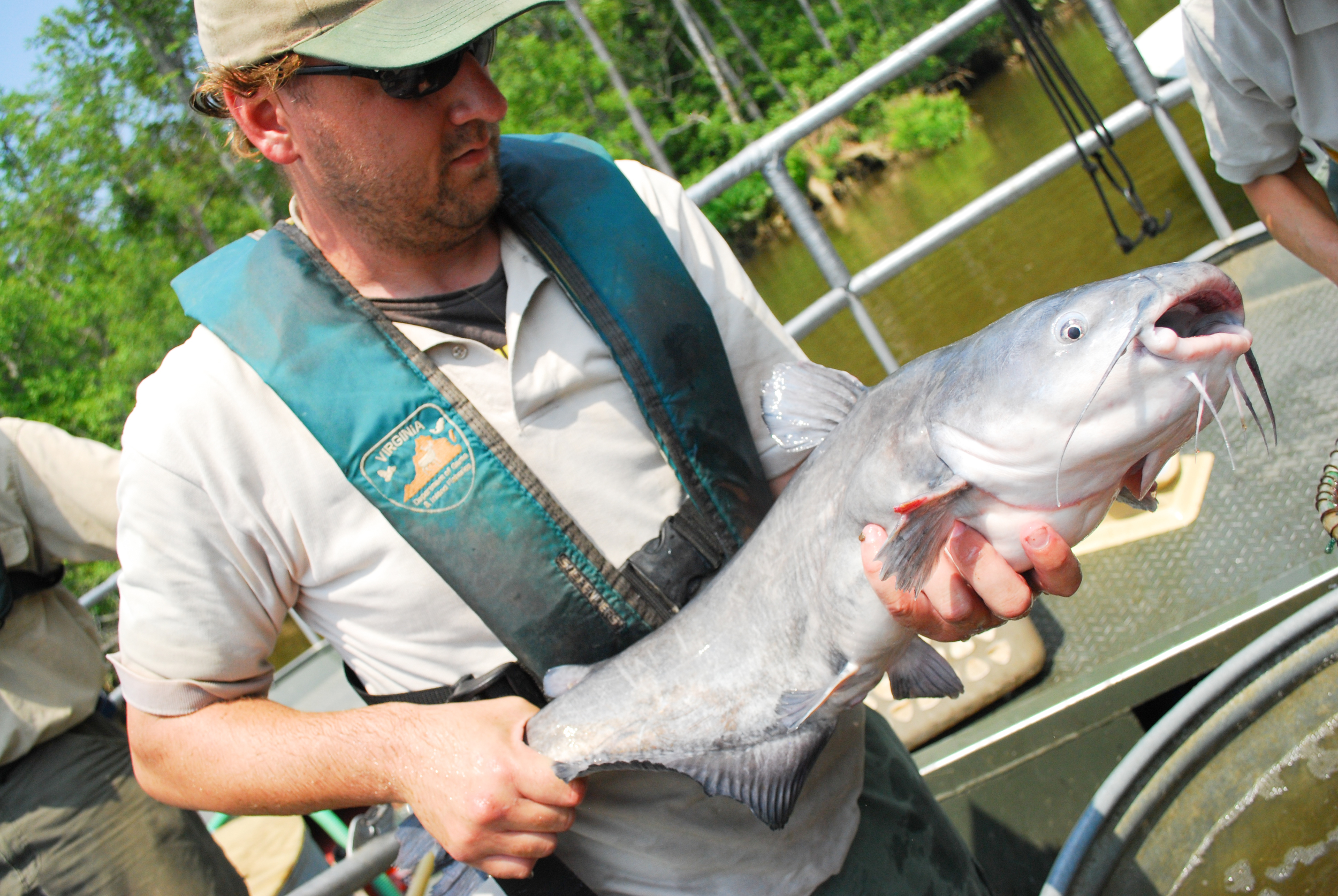This invasive fish could pose a bigger threat than snakeheads
/Growing blue catfish populations in the Potomac spell trouble for local fish
photo from the chesapeake Bay Program.
You've probably heard of snakeheads, the sharp-toothed, invasive "Frankenfish" discovered in a Maryland pond 14 years ago.
But what you might not have heard is that those ever-feared and so frequently talked about fish might not be public enemy number one after all.
There's a new fish in town: the giant blue catfish.
The Potomac and Maryland tributaries are “flooded with little blue catfish right now,” reports Mary Groves at the Maryland Department of Natural Resources in the recently released State of the Nation's River Report.
The largest species of catfish in North America, the blue catfish is a non-native predator that appears to be growing quickly in size and population in the tidal Potomac. Experts from Virginia and Maryland agree their growing presence in local waters spells likely trouble for other fish species, like shad and bass.
They're opportunistic eaters that devour mussels, vegetation, and other fish, and can live for up to 30 years, growing in excess of 100 pounds.
So how'd they get here? Well, it actually wasn't an accident.
The blue catfish was introduced to the James and Rappahannock rivers in the 1970s for recreational fishing by the Virginia Department of Game and Inland Fisheries, but they are now considered invasive. In parts of the James, the fish have nearly taken over, accounting for as much as three-quarters of the fish biomass.
Though it's not known how many blue catfish are in the Potomac, there's reason to believe their numbers are growing.
In 2014, the number of blue catfish caught by commercial fishermen on the Potomac jumped nearly 62 percent, surpassing rockfish catches for the first time.
Catches in the Virginia section of the Bay have also skyrocketed, the Chesapeake Bay Journal reports, reaching over 1.2 million pounds in 2014, up from just 150,328 pounds in 2010.
While increasing populations are likely contributing to that rise, so is commercial demand for the tasty fish.
Last year, the Seafood Watch program, which makes recommendations on sustainable seafood for consumers, named blue catfish from the Chesapeake Bay region a "best catch." It was the first time the group had made a recommendation about an invasive fish.
Blue catfish is also helping feed hungry families throughout the region with the help of the Wide Net Project, a local organization that partners with distributors to provide free or below market value blue catfish to hunger-relief organizations.
It's still not clear what impact blue catfish are having on local fisheries, and state and federal agencies continue to investigate. But one thing is certain. They're here to stay.















Curious about how local critters get through the winter?
We’ve got the intel for you! Whether it’s packing on the pounds, getting out of dodge, or cozying up with some friends, Mother Nature has quite an amazing response to the cold. Find out how five common critters spend the winter.